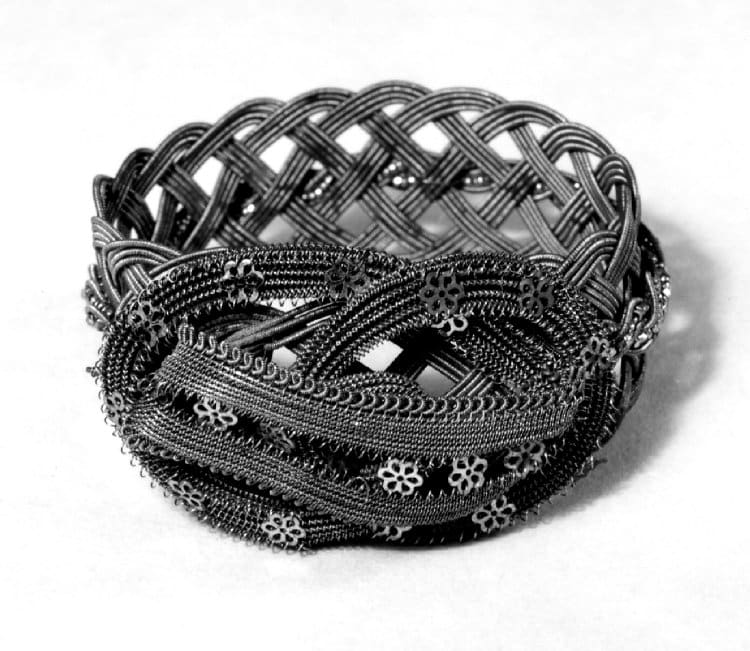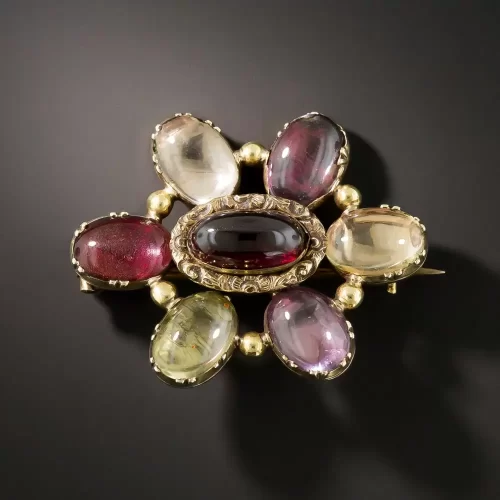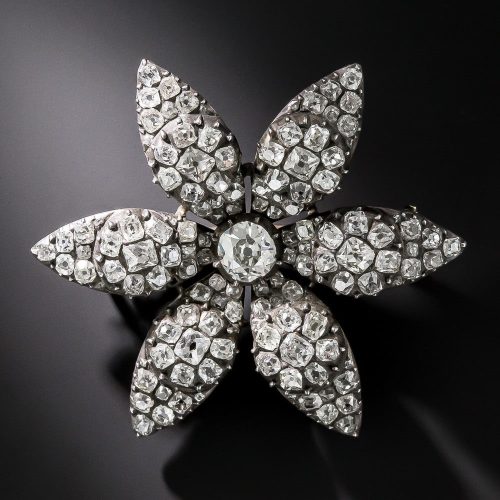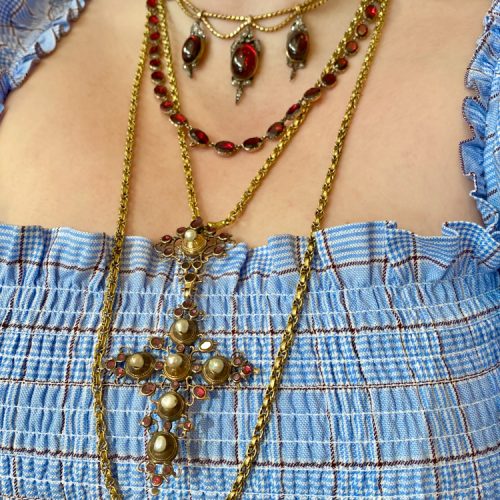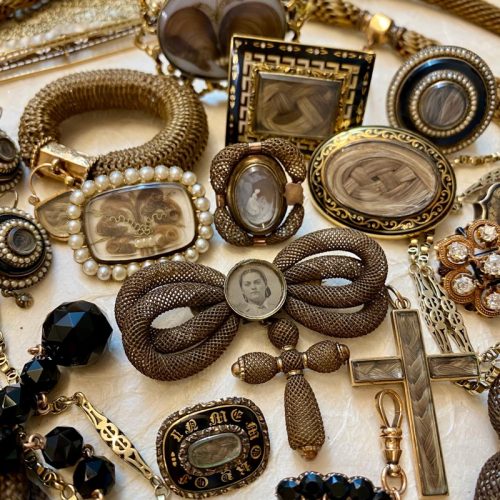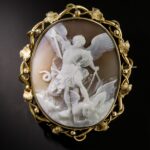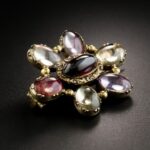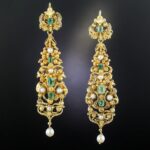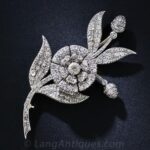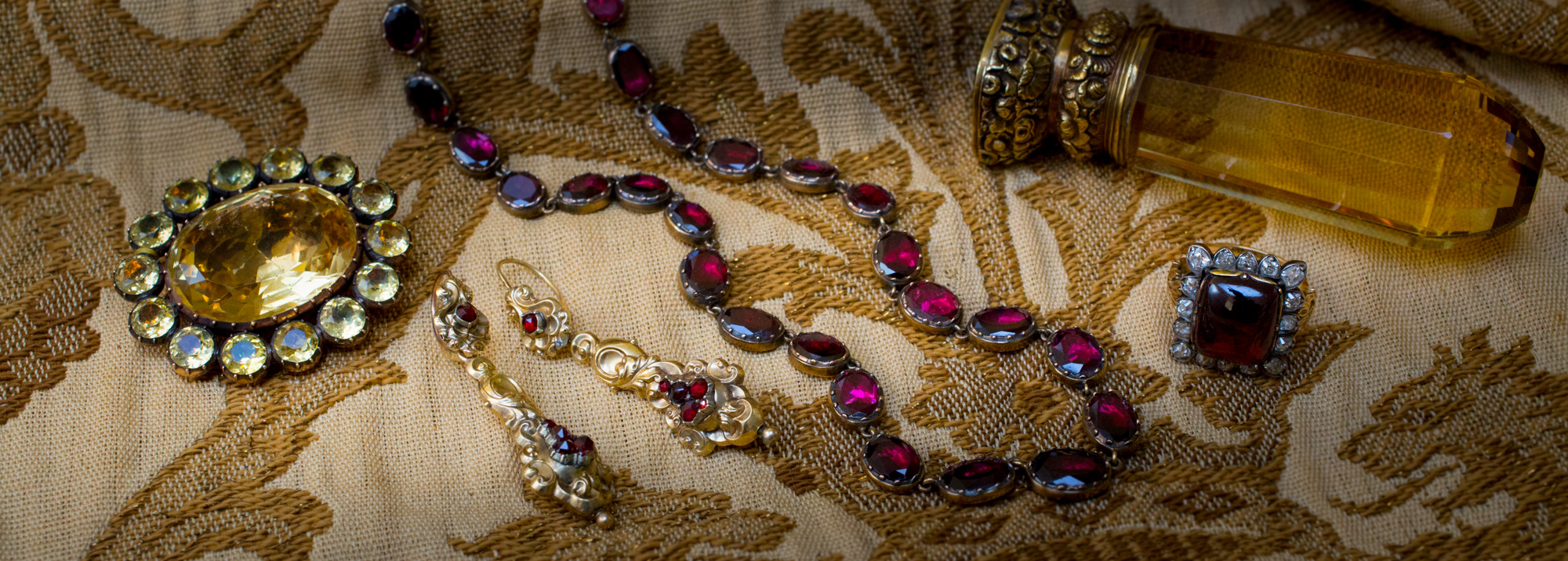
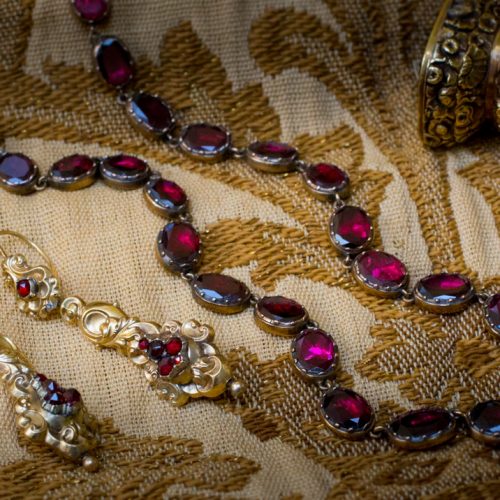
Georgian Era: 1714-1837
The burgeoning art scene, great strides in science and world exploration, the advent of rail travel, and changing societal roles for women, created the perfect backdrop for the creation of the magnificent jewelry we call Georgian.
Influences/Advancements of the Era
- New discoveries in wicks and cleaner, longer-burning candle “recipes” finally made these costly items available to the masses. The impact on the diamond-wearing public was nothing short of electrifying.
- Discovery of diamonds in Brazil in the early 1700s and India’s Golconda diamond mine provided and abundance of these precious gems. Diamonds soared to the height of fashion for evening wear.
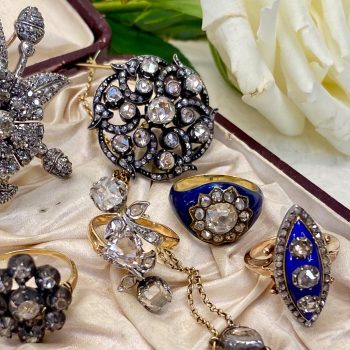
Metals
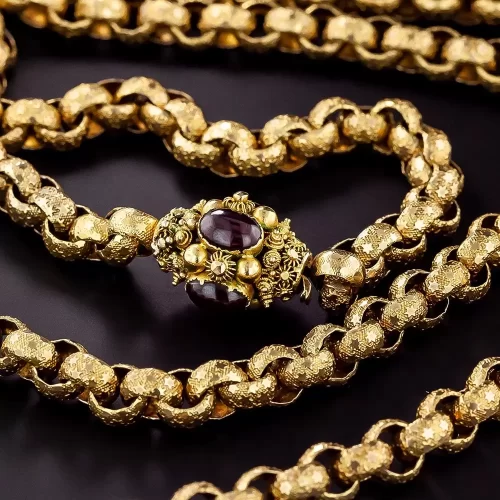
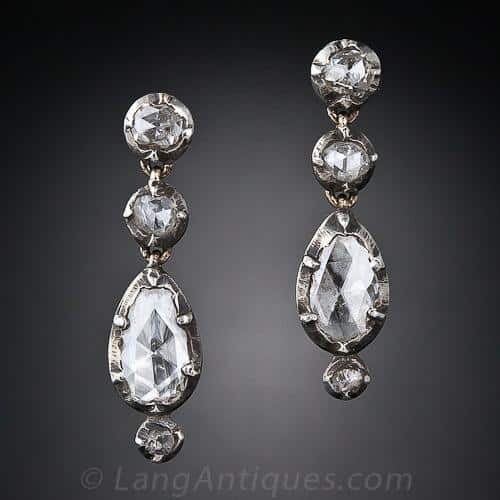
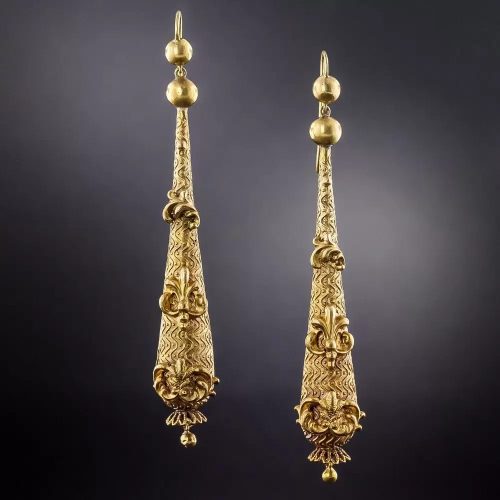
An effort by Christopher Pinchbeck to create gold from base metal resulted in an alloy of 83% copper and 17% zinc. Pinchbeck jewelry was popular in its own right.
Gemstones
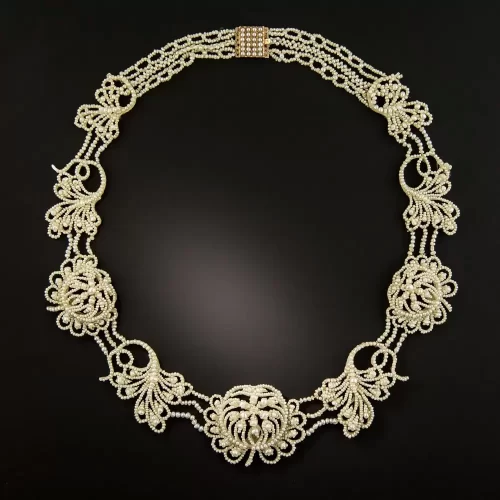
Pearls
Natural pearls during the Georgian era were very rare and, therefore very expensive. The abundance of seed pearls made them a popular option. Blown glass faux pearls were also a common substitution in Georgian jewelry.
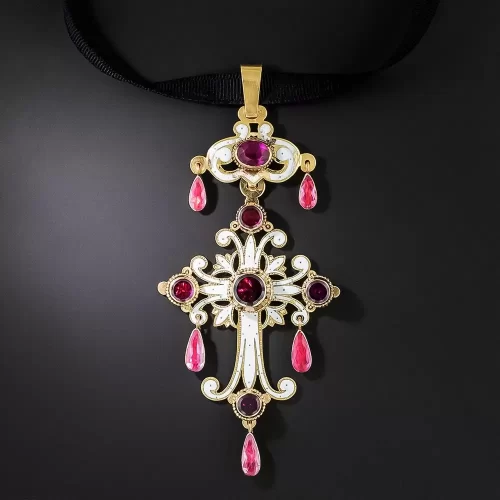
Faux Gems
Right alongside these genuine gems, and almost equally as popular, were the imitations. Leaded glass, opaline glass, Vauxhall glass, tassies, and Wedgwood’s Jasperware beads and cameos were used to imitate all manner of colored gemstones.
Techniques/Innovations
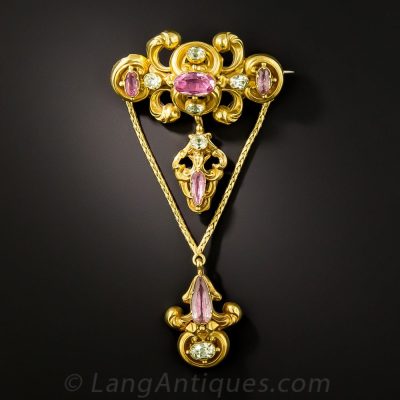
A decorative technique whereby three-dimensional low-relief designs are formed by using punches and hammers on the reverse side of the metal.
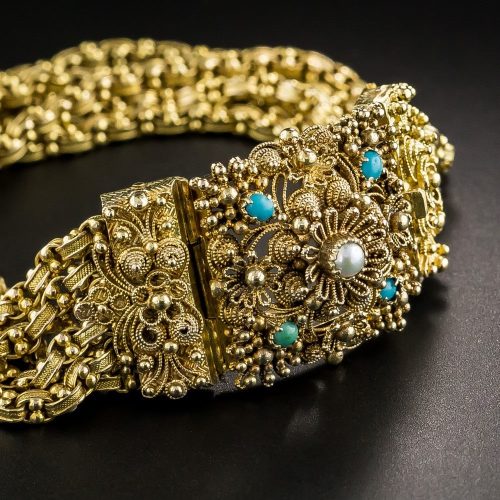
Created with fine gold wires twisted together, or thinly hammered strips, that were coiled into intricate designs, cannetille decorations were often used together with the application of granulation (tiny gold beads).
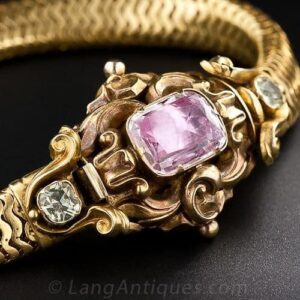
Foil backing (or foiling) is a gemstone enhancement treatment in which a thin sheet of metal or other material (sometimes colored) is placed behind the gemstone in order to reflect more light, and/or color, back into the stone and then toward the viewer. Foil-backed stones had closed settings to prevent damage.
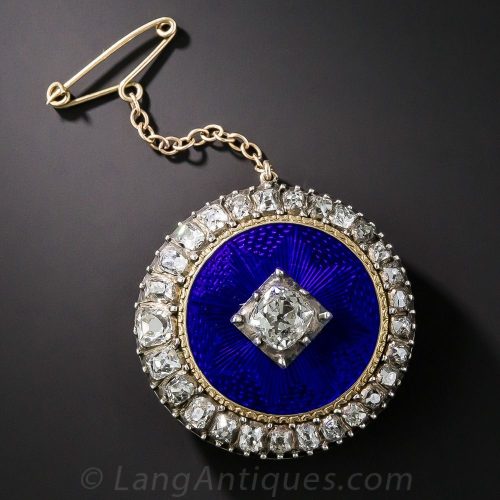
Styles/Motifs
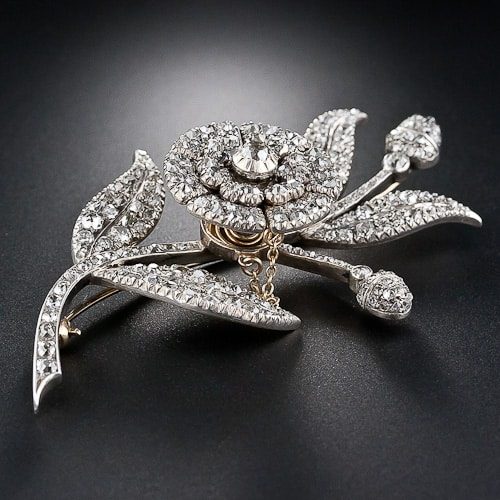
En Tremblant Brooches
A popular technique during the era, this brooch features a flower set “en tremblant”–a French term meaning “to tremble.” A hidden spring creates movement when worn.
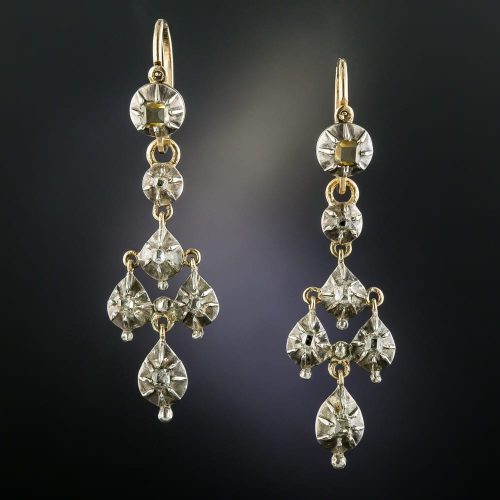
Hanging Earrings
Long diamond earrings were favored for the evening. These, set with table-cut diamonds, have detachable drops so the tops can be worn separately.
Final Notes
Gold assaying, a testing process that determines the purity of metal and the proportion of noble metals in an object, was not enforced until the 1900s. Therefore, you will find very few authentic Georgian jewelry pieces with stamps of metal purity or of any maker’s marks.
As beautiful as the pieces were, owners of jewelry from this era often had them melted down to make new jewels that reflected current trends. An original authentic Georgian jewel is truly a rare treasure.
Shop at Lang
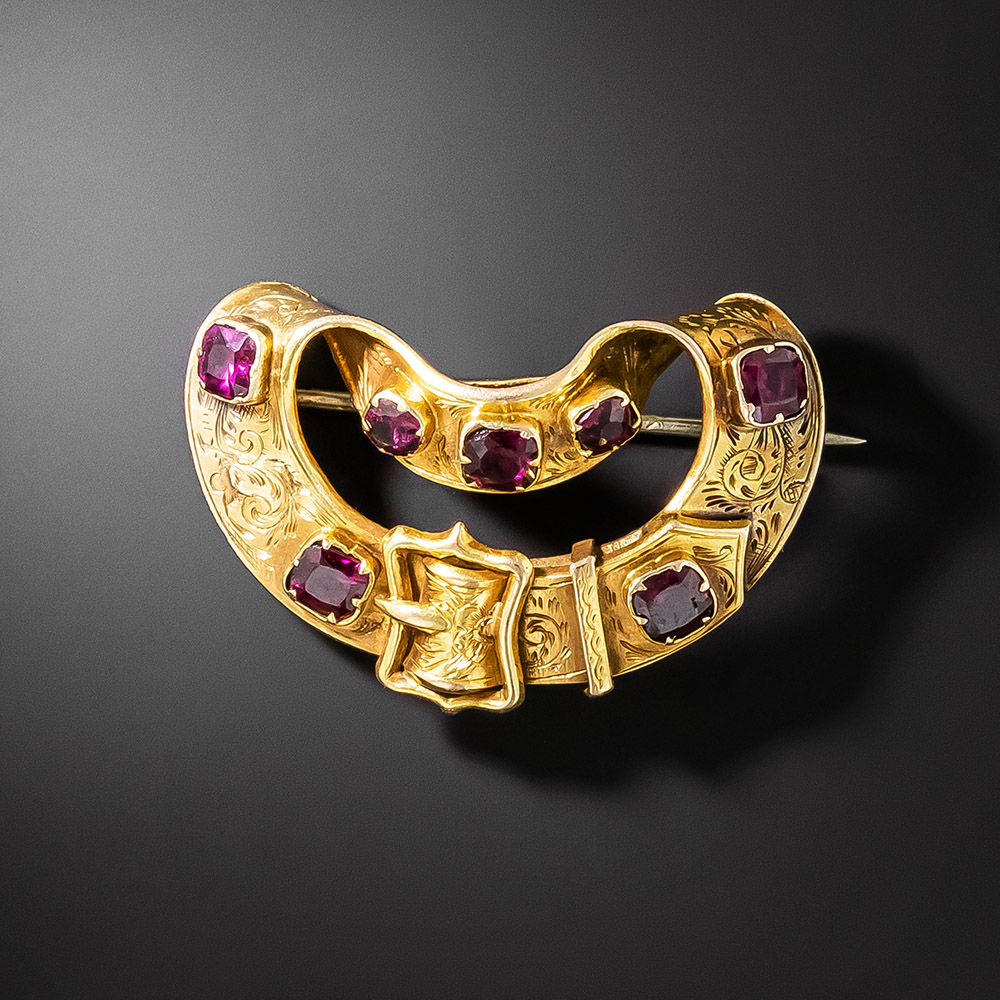
Georgian Garnet Garter Pin
Initiate yourself symbolically into the British Order of the Garter* with this delightful Georgian/early-Victorian (circa mid-19th century) adornment, exquisite…
SHOP AT LANG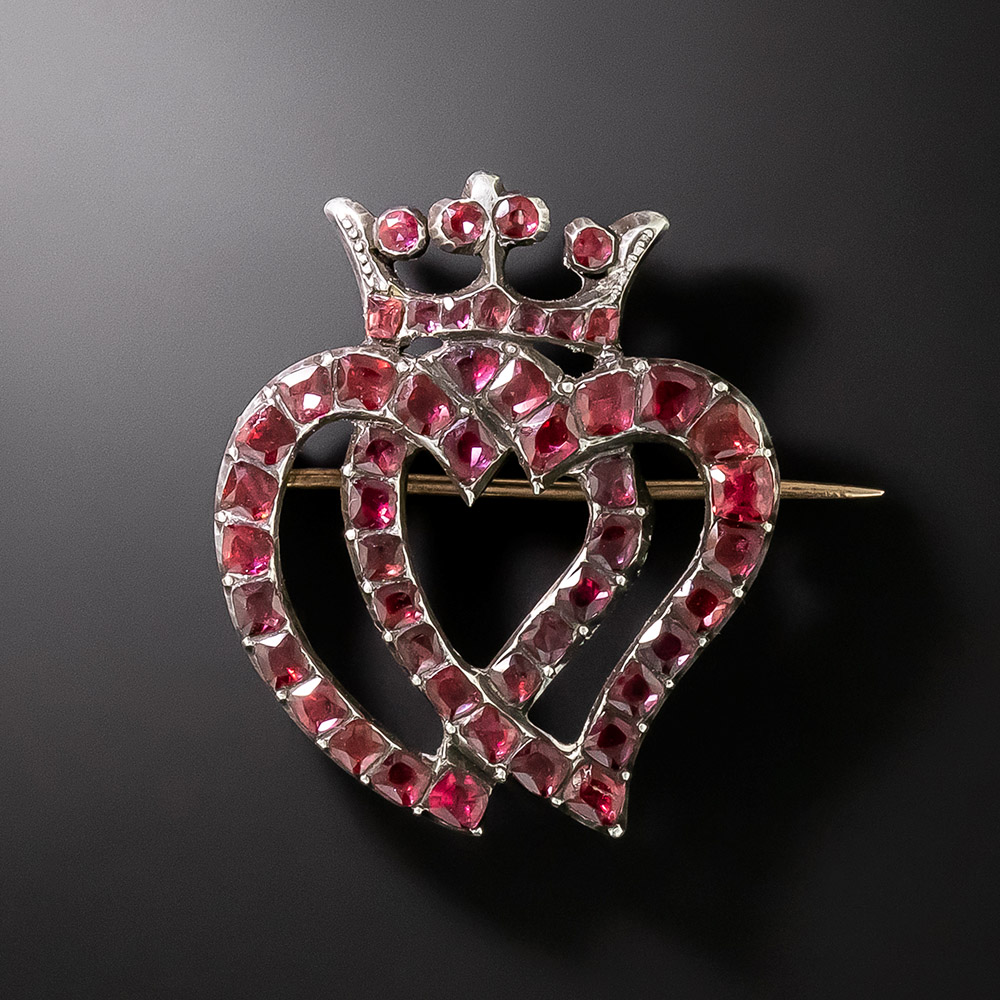
Georgian Interlocking Witch's Heart Garnet Brooch
A popular motif during the Victorian era, the witch's heart--the tail of which twists to the right--symbolized love, loyalty, betrothal, and even protection (th…
SHOP AT LANG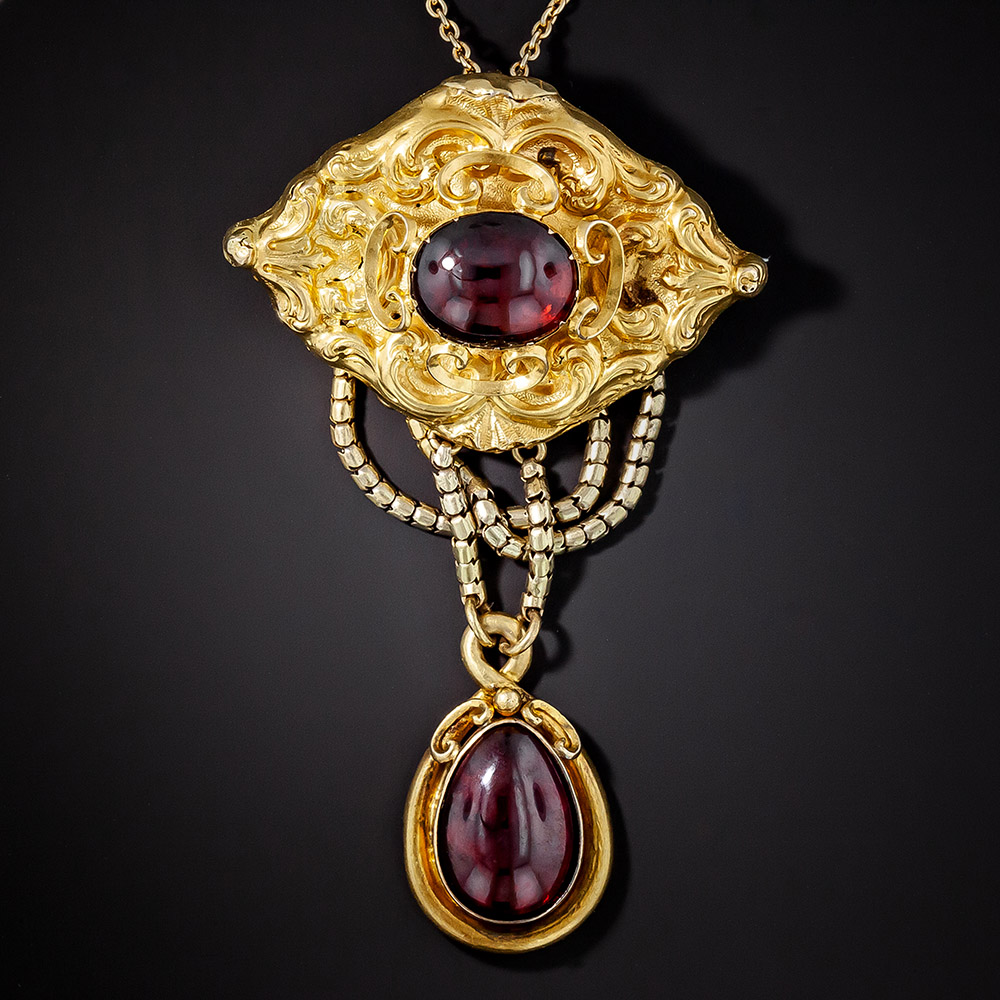
Georgian Cabochon Garnet Pendant/Brooch
Dating back to the 1800s this romantic work of wearable Georgian art, measuring 2 3/4 inches long, highlights a pair of cabochon garnets imbued with a deep wine…
SHOP AT LANG
